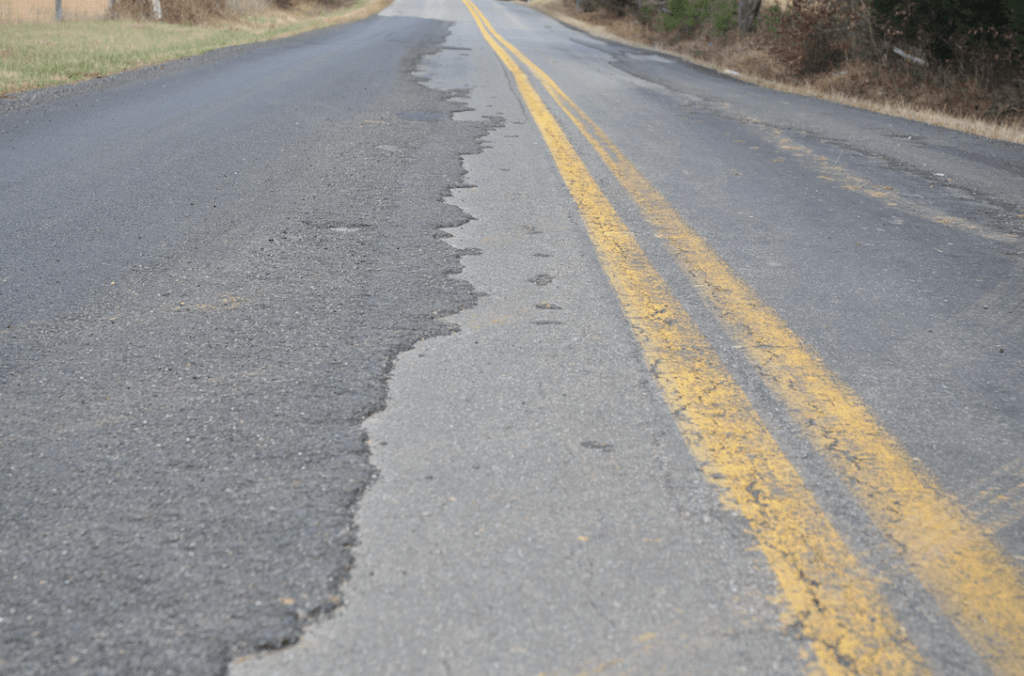Road will see repairs in the spring
Published 1:05 pm Tuesday, January 3, 2017

- JORDAN MILES | HERALD The recent application of asphalt to parts of route 602 near Glenmore has caused bumps in the road, leading motorists to question the temporary work.
Why did the Virginia Department of Transportation apply asphalt on parts of Route 602 in Buckingham between Route 56 and Howardsville, making the road very rough?
Temporary work on Route 602 — a paved road connecting Route 56 to Howardsville through Glenmore — has caused motorists to ask why the Virginia Department of Transportation (VDOT) applied asphalt to portions of the pavement, causing rough bumps on the road.
The recently applied asphalt lies about 1 mile south of Glenmore.
“The temporary repair work was completed … by VDOT crews,” said VDOT’s Lynchburg District Assistant District Administrator for Maintenance Dale Totten. “The repairs were necessitated due to failing pavement. That failure was localized to a few areas and is likely due to inconsistencies in the cross section of the pavement and the life of the pavement. As pavement ages, it deteriorates and occasionally minor rutting or raveling can occur; thus leading to the need for short term intermediate repairs to the riding surface.”
According to VDOT spokeswoman Paula Jones, the agency has been monitoring the portion of Route 602 for months.
“Crews have applied asphalt to try to level the surface and came back (Tuesday), I believe, and applied cold mix (we cannot use asphalt due to temperatures) to fill in some rough spots,” Jones said last week. “We will continue to monitor the roadway and will make more permanent repairs, as needed, in the spring.”
The repairs were made using asphalt and a technique known as heavy mechanized patching, Totten said.
“This technique applies a thin lift of asphalt across the slope of the pavement to make the cross slope consistent; inconsistencies are filled and leveled. This effort establishes a consistent cross slope and is undertaken to allow positive drainage of all surface runoff from the center of the roadway to the roadside ditch,” Totten said.
He said the treatment is typically undertaken as “a short-term stop-gap measure until the failing areas can be removed and the pavement structure and riding surface can be restored. I drove this segment of roadway last evening and again this morning (during the rain event) and noted that runoff was migrating to the roadside shoulder and ditch and not ponding on the travel way,” Totten said late last week.
VDOT crews made modifications with cold mix because “some of the thin layer of asphalt applied in October did not bond to the existing pavement section. The use of cold mix is our standard practice during colder weather months when asphalt plant production ceases.”
“VDOT crews are doing the repairs and I do not have costs at this time,” Jones said. “A supervisor checked the area again (Wednesday). They will do so in the course of their work.”
According to Jones, a cold mix asphalt is a repair material that repels water and remains flexible in cold weather. “These properties make it easier to work with this time of year,” she said. “In spring, crews will open the surface to discover what the cause might be and make repairs, as appropriate.”
“The permanent repair will mechanically remove the failing materials, restore the base materials, if needed, and an in-lay asphalt patch will be performed,” said Totten.





